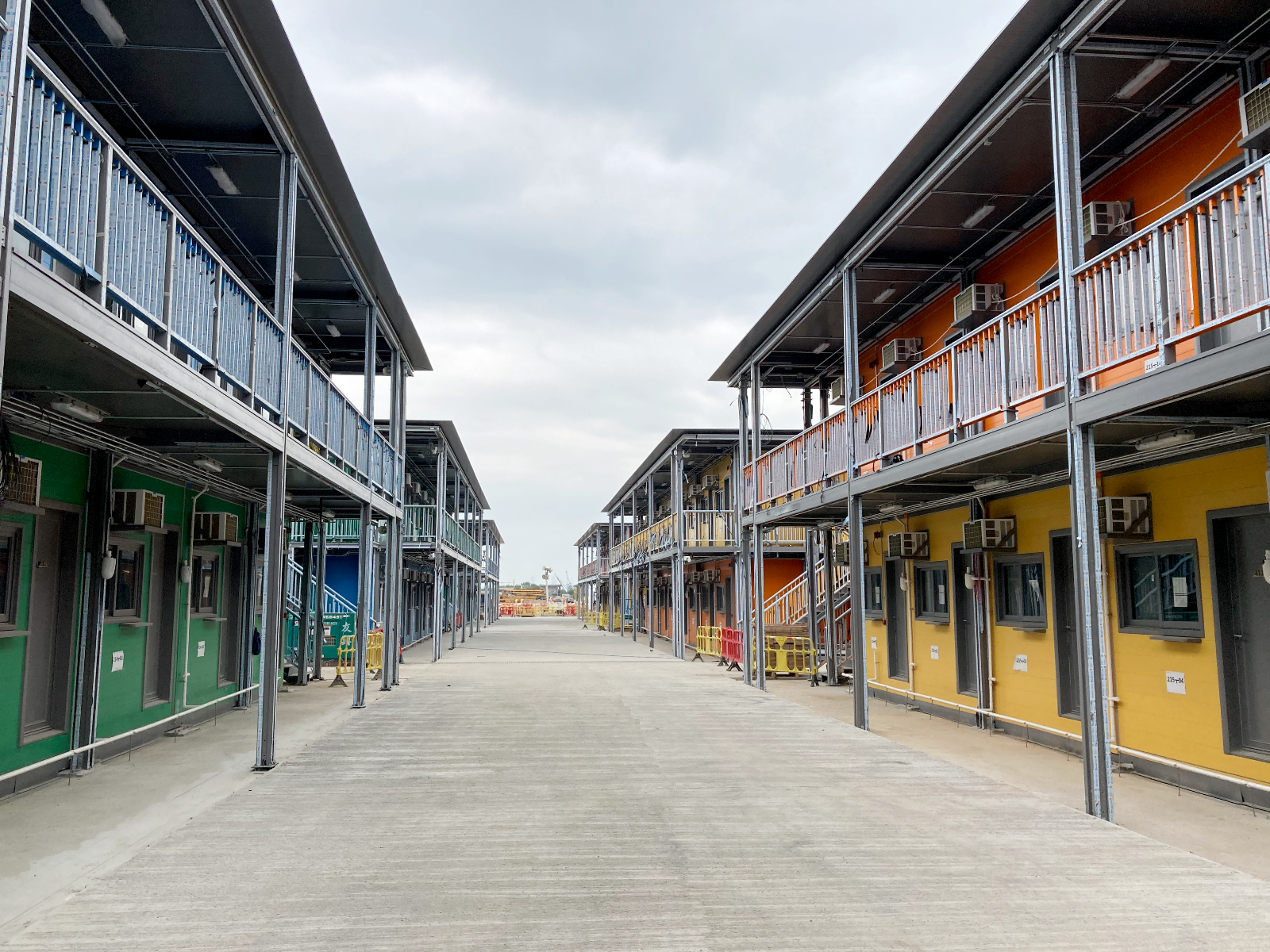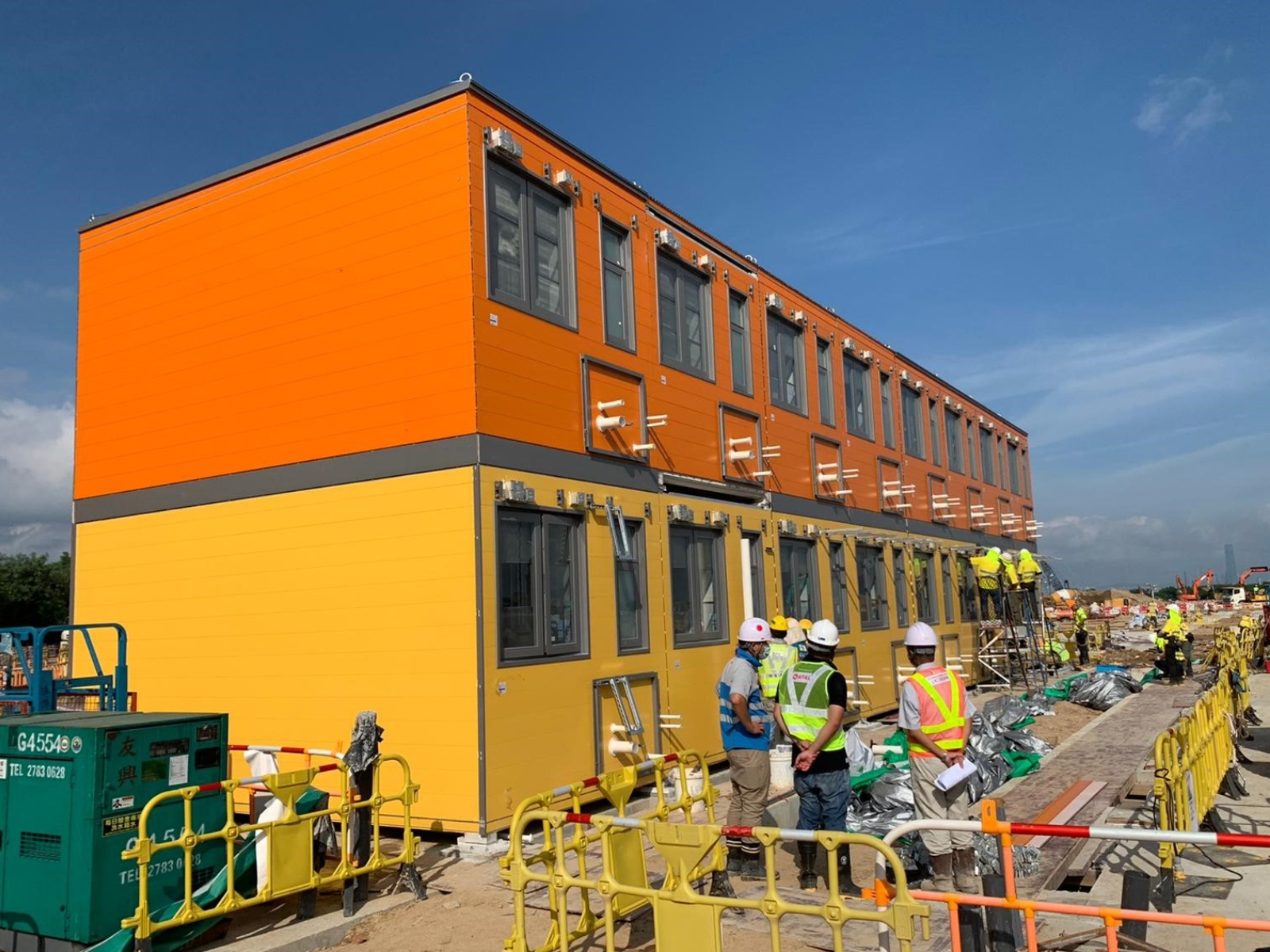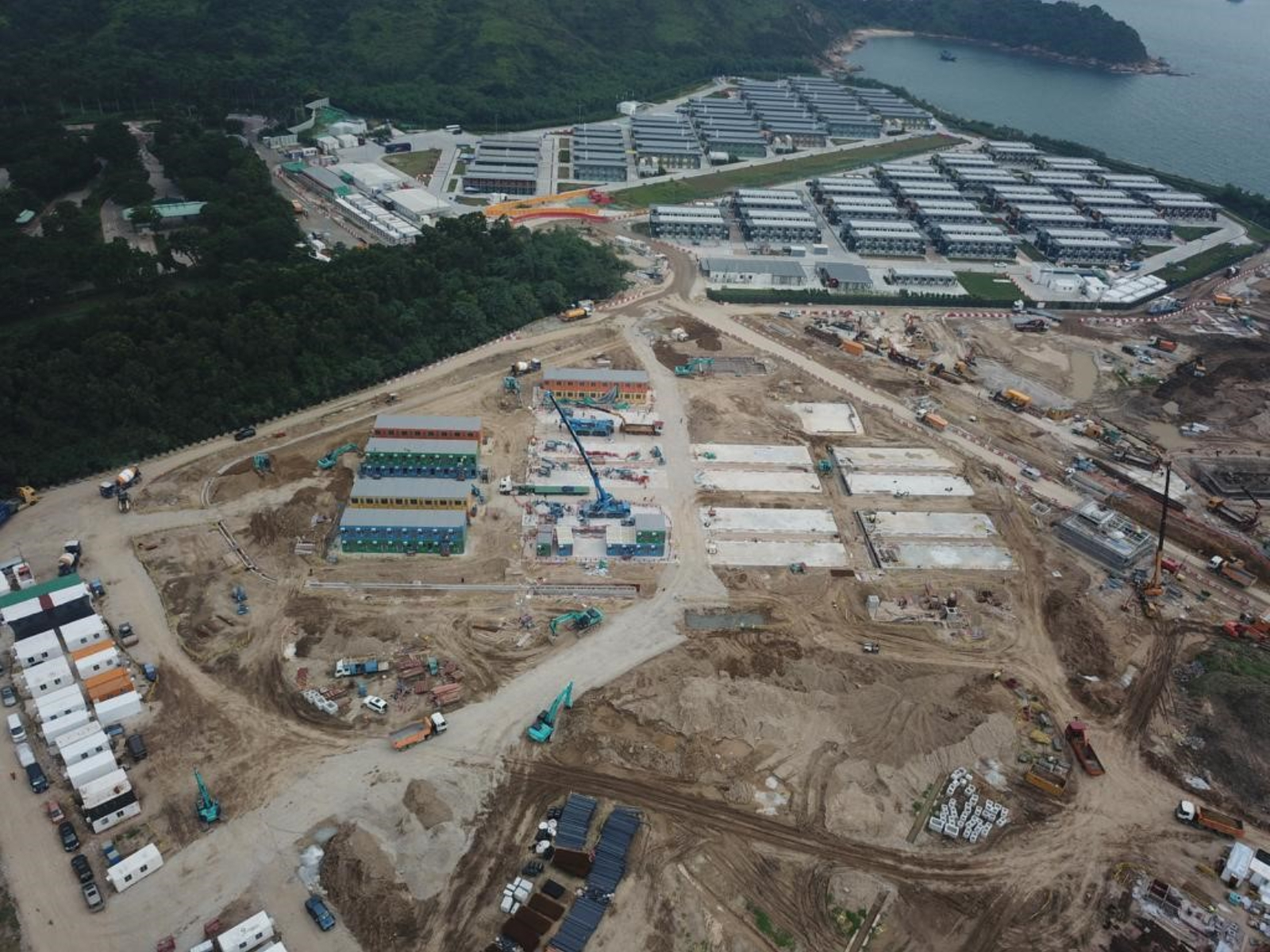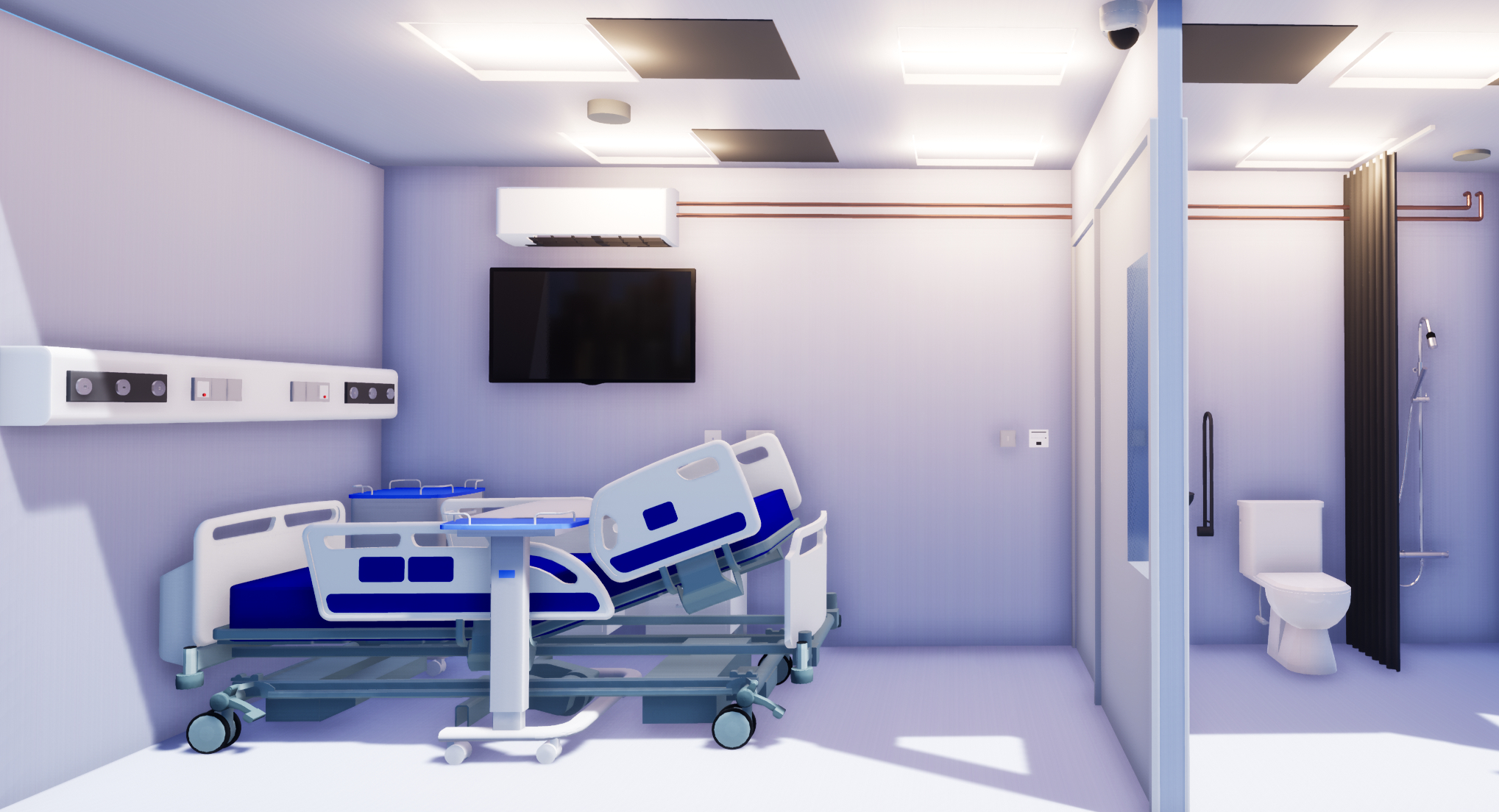Analogue
Issue 06, Nov 2020

Issue 06, Nov 2020
Since the outbreak of the COVID-19 pandemic in January 2020, ATAL has provided round-the-clock E&M engineering support to public hospitals and clinics. We are honoured to have now also awarded the contract for Phase IV of the Penny’s Bay Temporary Quarantine Facilities on Lantau in advance of a possible new wave of infections this winter. Quarantine facilities are a key link in Hong Kong’s measures to fight the pandemic, allowing potential carriers to be quarantined to control the spread of the virus and isolating confirmed cases for treatment.
Our project scope covers the MVAC, electrical, ELV, fire services and plumbing installations for over 300 quarantine units, a medical post and the associated ancillary structures. The units were constructed by Modular Integrated Construction (MiC) and the MEP works involved off-site prefabrication. All electrical, MVAC, fire services, plumbing and ELV installations, including testing and commissioning, had to be completed within 75 days. Finally, we have completed the project on time.
“With rich experience in hospital engineering and MEP design and installation work, our healthcare project team rose to the challenge,” said Ir CK Tam, Chief Executive for Infrastructure and Healthcare Engineering.
To make the best use of limited time, MEP design and prefabrication proceeded in parallel with the MiC construction of quarantine units. The MEP systems were prefabricated in an off-site factory, and transported to the site for assembly and installation. MEP prefabrication not only saves time, but also enhances efficiency, quality and worker safety and reduces material wastage, making the process more sustainable.
The ATAL team also applied innovative construction technologies such as Building Information Modelling (BIM) to enhance the precision and quality of design, fabrication and installation works. Apart from meticulous MEP planning, the flexible deployment of manpower and resources was also important to the success of this project given the tight time frame, with frequent meetings to finetune the workplan and sequencing of tasks. ATAL’s well-established relationships with sub-contractors were another success factor as these partners were willing to mobilise extra workforce to help us meet the deadlines.
Even though the entire project, including testing and commissioning, had to be completed within about two months, every task was conducted “right the first time, every time” which is ATAL’s principle. We have not wavered from our commitment to excellence, winning again the client’s high regard. “Thanks to the ATAL team’s full support and dedication to professional and high-quality service delivery, the project was promptly completed within a very strict deadline. This is indeed impressive.“ said Ir Aaron Bok, Head of Civil Engineering Office of Civil Engineering and Development Department after the successful completion of the project.
Though quarantine facilities are relatively new to Hong Kong, ATAL has many years of experience in healthcare engineering, including expertise in HEPA filter units, isolation wards, negative pressure systems and related building technologies. As the pandemic will likely remain a threat to the city for some time, we shall continue to leverage our expertise to safeguard public health and wellbeing.

Temporary Quarantine Facilities at Penny’s Bay (Phase IV) were launched in early November

This is a super-fast track project with our works completed within 75 days

The Government plans to build 7,500 quarantine units in Penny’s Bay
As COVID-19 continues to sweep the world, the demand for negative pressure isolation wards is unprecedented. To ensure that these wards can be made available as and when needed, at scale and at short notice, ATAL has designed and constructed a prefabricated negative pressure isolation unit with all the functions necessary to isolate a patient known or suspected to have an airborne infectious disease. The rapidly deployed ATAL-Negative Pressure Isolation Room (ATAL-NPIR) provides an excellent solution for quarantine facilities and hospitals in large-scale emergencies, like a pandemic.
The ATAL-NPIR is built with a negative pressure ventilation system, ensuring no risk of airborne contamination. The unit consists of an anteroom for gowning, handwashing and storage, a patient room and a bathroom with a shower, toilet and wash basin. The entire unit is sealed to prevent air leakage, and rooms are ventilated and maintain a good pressure differential to prevent outward air flow, with a minimum of 12 air changes per hour in the patient room.
Pressure differential sensors constantly monitor the air pressure differential between the patient room and anteroom. Audio and visual alarms will immediately alert healthcare personnel in the event of abnormal pressurisation between the different zones.
The NPIR is designed to be immediately operational upon delivery, with an all-in-one system where E&M plant facilities are pre-installed at the top of the unit. Both air supply and extract systems are installed with HEPA filters, and exhaust fans are well separated from intakes.
For patient comfort, the patient room is designed with a low noise level of 35db. The room also comes with TV, 5G network, viewing windows, a nurse call system, CCTV and smoke detection systems for safety, and an X-ray box. The unit has PV panels installed to save energy.
The NPIR showcases our healthcare engineering capabilities to satisfy burgeoning market demand and help contain the current pandemic. A prototype is now available for interested local and overseas clients.

We designed and built ATAL-NPIR to cope with the increasing needs globally